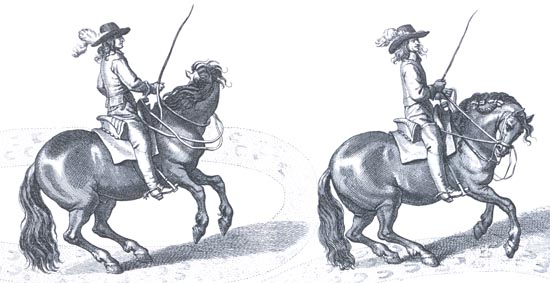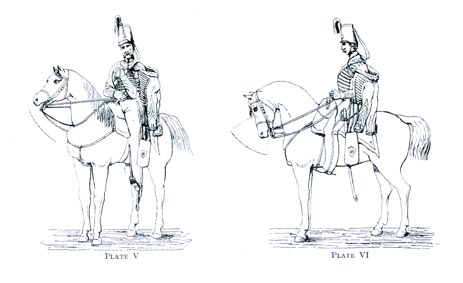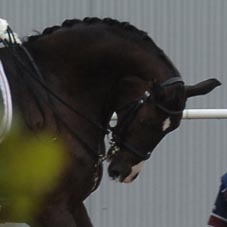Susanne Miesner is highly regarded in Germany as a rider, a trainer, and also a thinker, a questioner, and one prepared to examine any issue with an open mind. Here she addresses the issue of contact – and with that, the issue of the correct frame in which to work a horse. This article was written some years ago, has the problem been solved?
Really the question I was asking was ‘what do we do now?’ After all the talk about deep and round and hyperflexion, where do we go? The amazing thing was the response to a Seminar on Contact. What I thought was so interesting was that we have had seminars on the suppleness of the horse, we had seminars about the young horses, but very seldom have we given a seminar on just one particular subject: Connection… we all know that this one particular subject will involve everything – all the elements of the training scale.
It was an important issue to discuss because there is now a group of riders in Germany who are feeling very insecure – they are now not sure how to really make a horse supple, how to warm a horse up, how they should ride the horse, what frame it should be in – and when. They see all the photos in the magazines in those controversial articles, or they go to the international shows and they see what happens in the warm up, and then they go home confused – they don’t really know what they should do!
I think the riders fall into four groups. In one group are the riders who try to ride like the top guys – they purposely make the horses deep and short, not long and deep, but short and deep – hyperflexion.
Then the biggest group – fortunately – is the group that tries to stick to the principles and ride using the classical methods.
Then I think there is a third group, and this group has been with us for years, that wants to make quick money without spending too much time on the horses – and they don’t care so much where the neck position of the horse is, for them it is more important that they show off the right trot.
Then there is a fourth group, that now does exactly the opposite thing, they are so afraid of doing something wrong that they just keep giving and ride the horse in an extremely long frame. They are trying to be exactly the opposite from hyperflexion.
I don’t know how the riders break down in percentages for each group, but it was really interesting to think about having these four different groups of riders and their different reactions to the challenge.
I think the discussion about the right connection is a much more important discussion than just the talking about one element of the connection. I think when we talk about connection, we are talking about everything that is involved in equestrian competition. We are talking about keeping the classical goals, we are talking about the harmony between horse and rider, and more importantly, when we talk about connection we are also talking about keeping the horse healthy in the long run, and I would even go as far as to say that this involves issues of animal welfare.
For every horse, the head and neck connection is very important, it is hard to get it right, but we know that the neck of the horse is his balancing stick – and the connection is the mirror of what is happening in the whole body. Connection is the mirror of the entire horse, it’s the mirror of his balance, and it is a mirror of the degree of collection the horse is able to offer at this point in time. I always think the connection is the mirror of the soul of the horse, how he feels, his outlook. And as we know from the Training Scale, you can’t have a good connection without having rhythm and suppleness.
While if you don’t have rhythm and suppleness, you won’t get a good connection, if you don’t have a good connection, then you won’t classically advance very far. You will not have the perfect impulsion, you will not have the perfect straightness, it is just not possible and true collection will not come. We all know suppleness is the most important thing, but as soon as your connection is not right, then you have problems, and if you keep going, you have much worse problems.
If we look at the definition in the Principles of Riding – they say connection is a steady soft connection between the rider’s hand and the horse’s mouth. The horse should go in rhythm, supple, forward, and the horse should search for the connection, while the rider has an allowing hand.
Most German riders know those sentences off by heart, because we have to study them for our riding club tests, but a lot of people don’t seem to read further, because it goes on to say that the more advanced scale of connection is also called beizäumung, when the horse gives and flexes at the same time, and the principles say this is the higher degree of connection – it is not the goal, it is simply something that is going to happen through good riding. Today you see people get on the horse, and grab the reins, and try to screw the horse’s head in and later try to make this higher connection, but in The Principles it says it takes years to create this correct beizäumung.
Then I found another definition in Kurt Albrecht’s book – A Dressage Judges Handbook. Albrecht was the director of the Spanish Riding School from 1974 to 1985, and he is one of the most distinguished theorists of equitation in the world, and he said: The beizäumung is very seldom talked about and many younger judges and riders don’t even know the term any more. The beizäumung has two components, the component of flexing the poll and the component of the form of the neck – how the neck looks and how it functions. Both of these components must be correct before the horse can be really through
and accept all the aids, and can go properly.
Many riders and judges think you see the degree of collection in the way the horse carries its neck. So if the horse is very closed in the gullet, and the poll is the highest part, then they think the horse is collected, but they don’t look at the whole neck, all they are looking for is that the nose is on the vertical. General Albrecht says this is very dangerous, and that he hopes that riders and trainers will go back to considering the two elements of beizäumung: not just the poll, but also the neck.
Over the last hundred years, students of equitation discussed these issues, especially this problem, but they weren’t under so much stress as today to get things done quickly. If you read Seunig, or Bürger, they spend pages talking about this issue of contact.
People have always tried to bend horse’s necks – here is a Persian Horse, 600 BC, and even then they’re workiing on the neck.
If we look back in history we always had people like Baucher and Fillis, who were concentrated on the horse’s neck and flexing the neck.
In the early 1900’s we had the first statement of German Riding Principles, in the Cavalry manual, and it clearly says that only if you have a correct connection can the horse go happily forward, and keep three pure gaits. When we are thinking about connection, it must always come back to the three clear gaits!
Now I am shocked that in 2007 the FEI says that “hyperflexion of the neck is a technique of working/training to provide a degree of longitudinal flexion of the mid-region of the neck” and further, “There must be an understanding that hyperflexion as a training aid must be used correctly.” So the FEI says that this technique can be used ‘correctly’. Remember we are talking about a training technique which looks exactly like some of the work of the Duke of Newcastle in the seventeenth century – like this:






